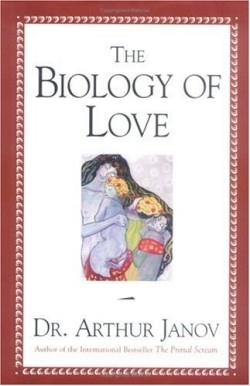The Biology of Love
If psychotherapist Janov had his way, the fetus, not the child, would be father of the man. He believes that love or its lack thereof in the early stages of life engraves a memory on the body as well as the mind. Since Janov’s concept of love is a “literal neurochemical event,” he sets out to show “how love is transmitted physiologically” in the womb and in the first eighteen months of life and how a developing fetus and newborn is affected lifelong by the mother’s choices. Even stress during pregnancy can cause hormonal changes and altered blood flow in the fetus, setting a template for later problems.
This book intertwines the physiological aspect of love as reflected in the brain’s biochemistry and the need for bringing to consciousness the early traumatic pain lying beneath layers of repression resulting from insufficient love. At the outset he says his book is “not about academic neurobiology,” yet offers in-depth chapters on brain structure and biochemistry. To his credit, the substantive scientific information is always linked to his theory on the body’s response to love-ideally a continuity that includes no drugs or alcohol before birth, no anesthetic during the actual birth and plenty of hugs and caresses for the newborn and toddler.
Janov writes for the lay person, and the challenging material is made easier by his style. His sentences are short and clearly written and his tone is earnest, as if he hopes to convince everyone what he already knows to be a revolution in its early stages. Outside research is unobtrusively inserted to bolster his premise. The reader who finishes the book will have no trouble understanding that “lack of physical closeness just after birth reduces the number of serotonin receptors.”
The author is also compelling in proposing that the only way to overcome the effects of lack of love is by retrieving memories on the instinctual and feeling and not just the thinking parts of the brain. It is in his method for reaching those feelings that he is somewhat coy, other than saying that his own brainchild, primal therapy, is the means to the end. This is no how-to book, however. The reader is only told that a “primal” starts with the representations of pain on its higher level and slowly regresses to “the salamander brain where terror originates.” A patient’s primal, we’re told, involves visceral reactions-writhing, coughing and arching of the back-but not how these feelings are invoked. For every reductive aspect to his theory such as Janov’s suggestion that a woman’s fear of elevators may be due to her having been confined to an incubator at birth, there is a statement that builds a base for future discovery.
It’s difficult to argue with the fact that the emphasis on ideas rather than feelings expounded by traditional psychotherapy needs to be altered since it does not incorporate recent neurologic information.
In the meantime, Janov effectively shows that when it comes to love, the body doesn’t lie.
Reviewed by
Judy Hopkins
Disclosure: This article is not an endorsement, but a review. The publisher of this book provided free copies of the book to have their book reviewed by a professional reviewer. No fee was paid by the publisher for this review. Foreword Reviews only recommends books that we love. Foreword Magazine, Inc. is disclosing this in accordance with the Federal Trade Commission’s 16 CFR, Part 255.

